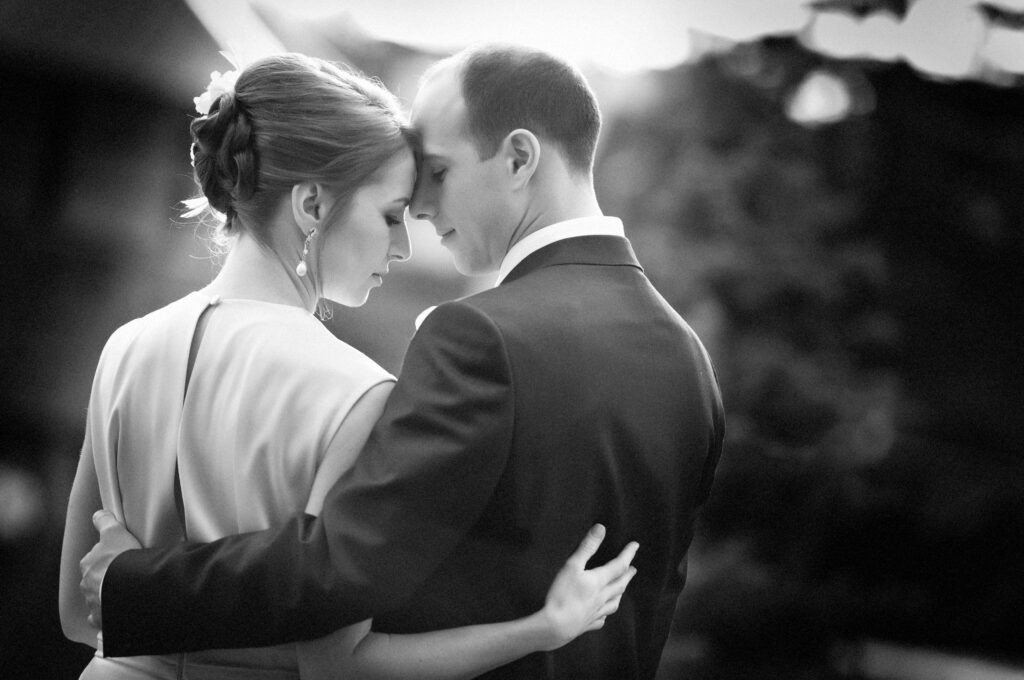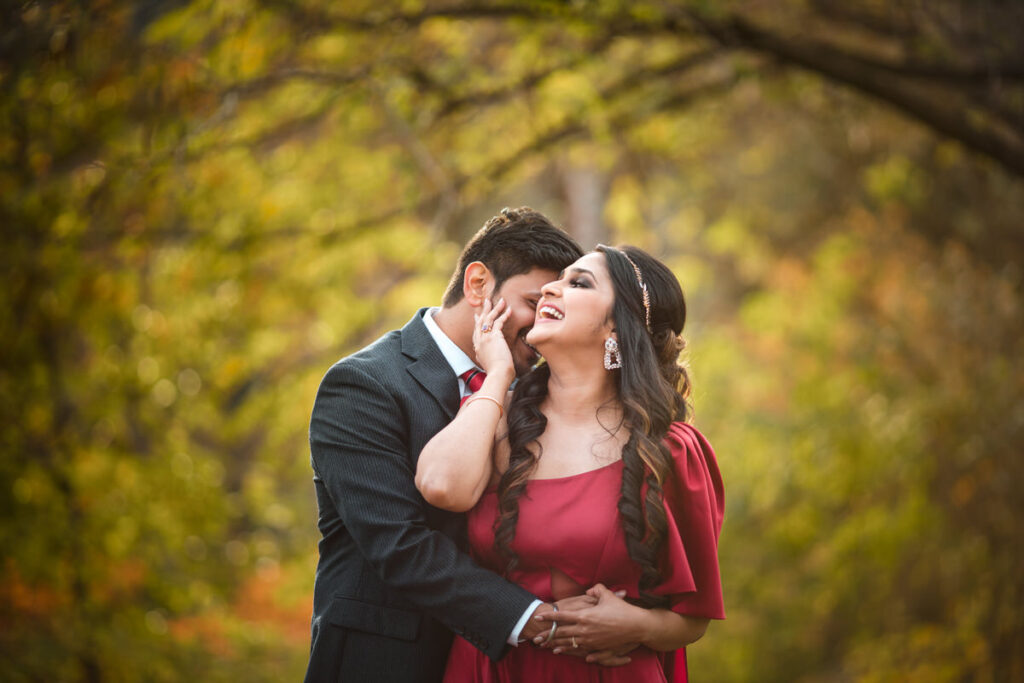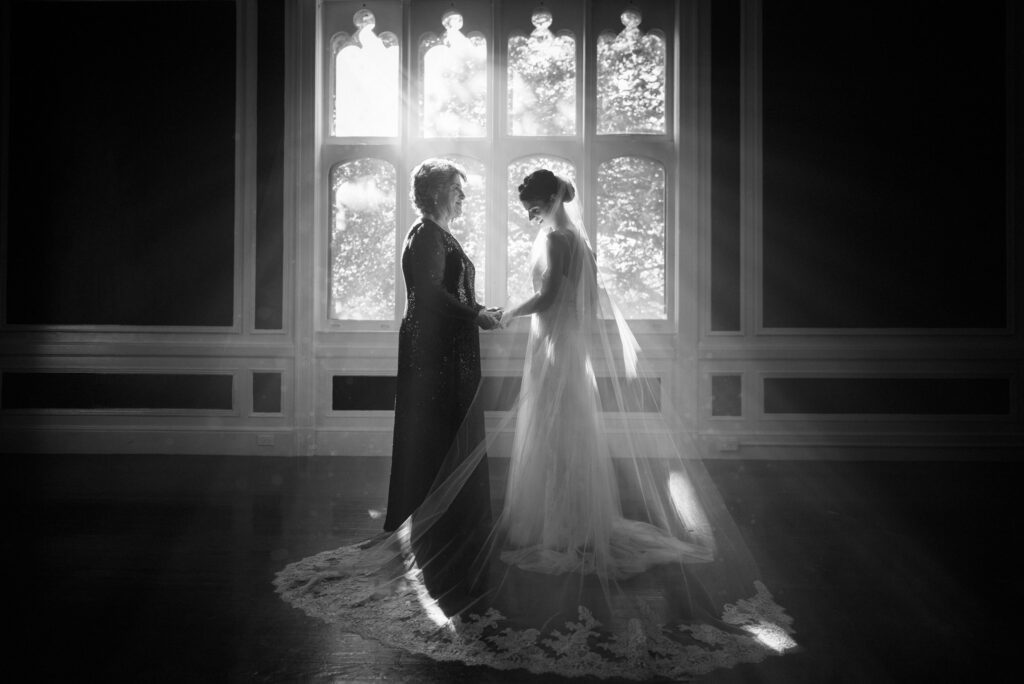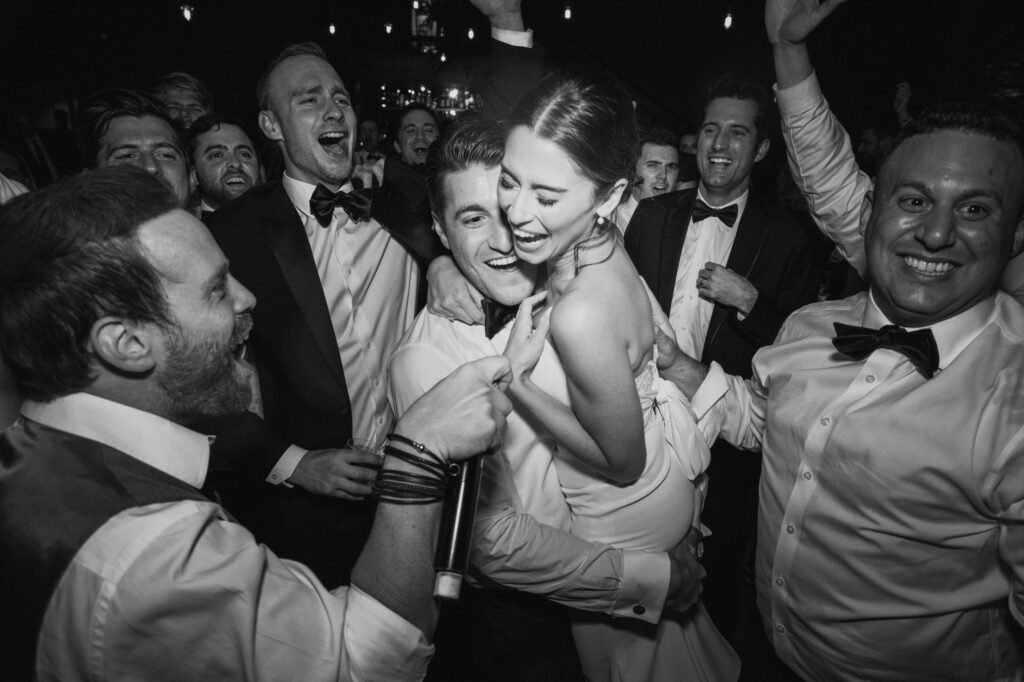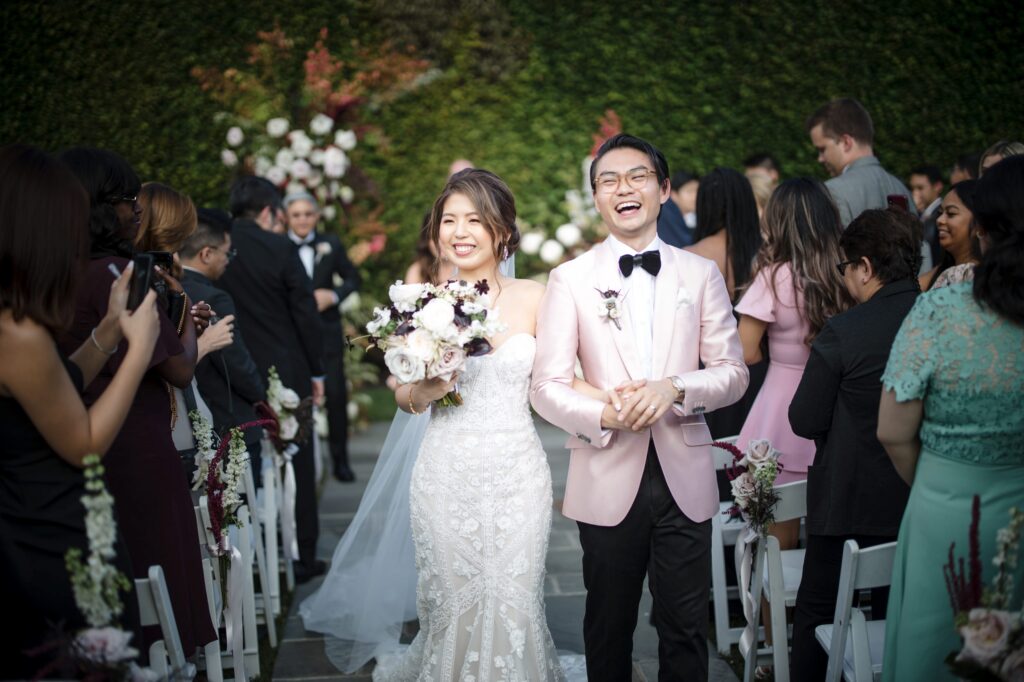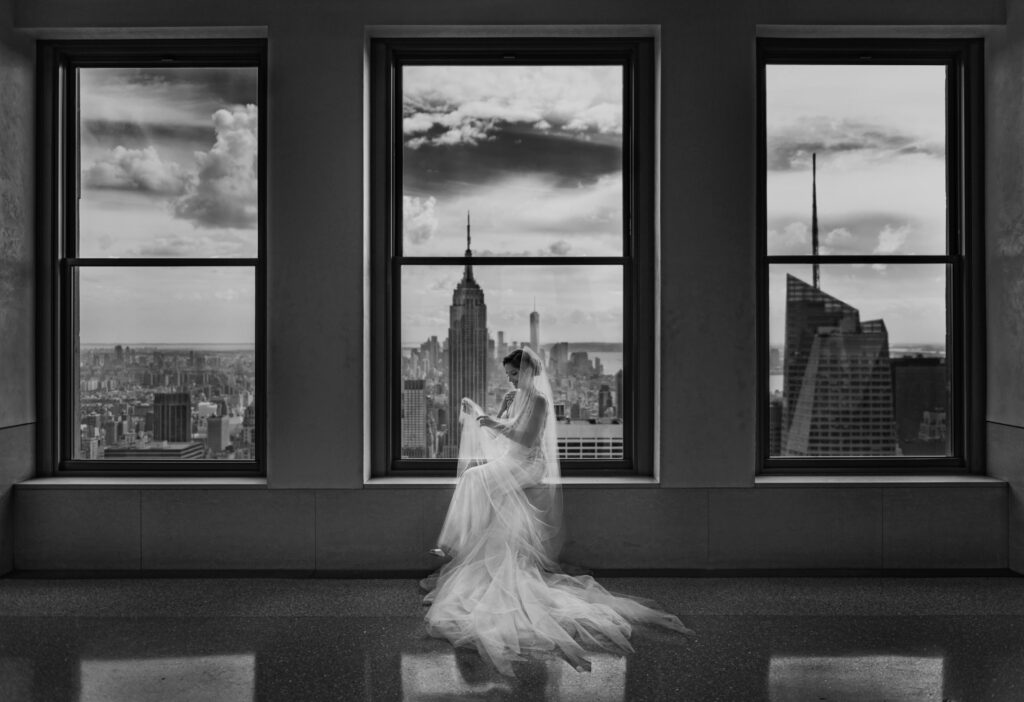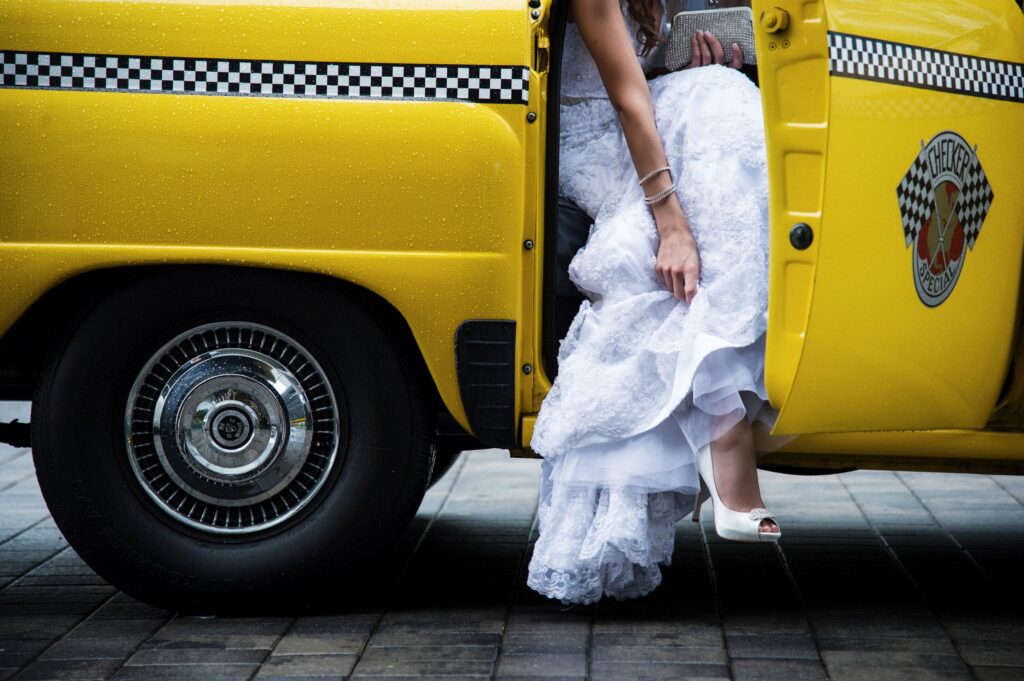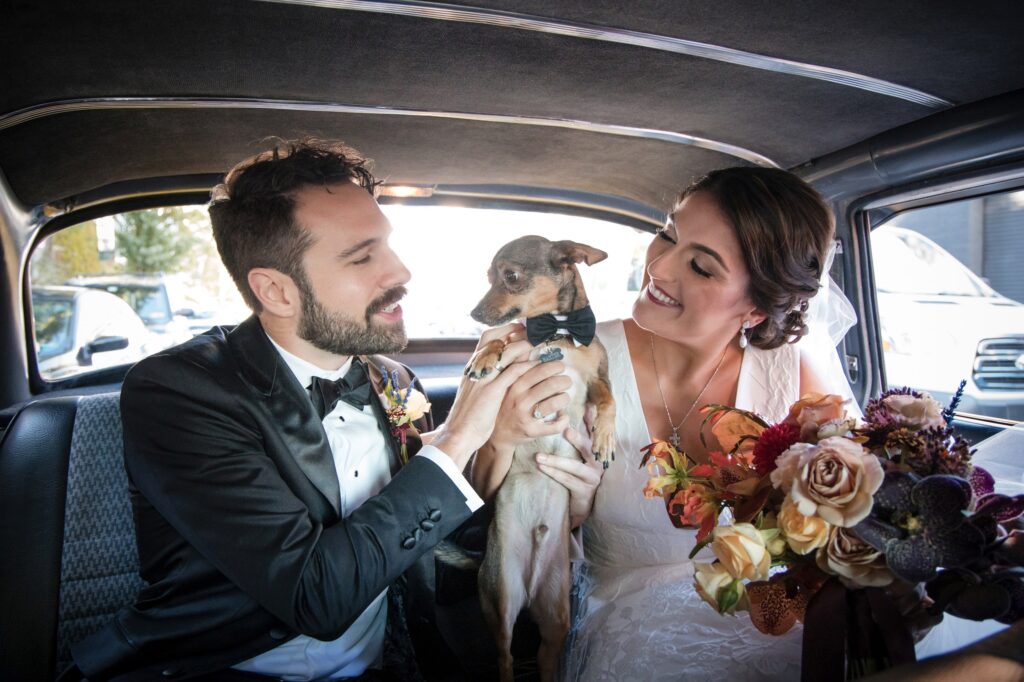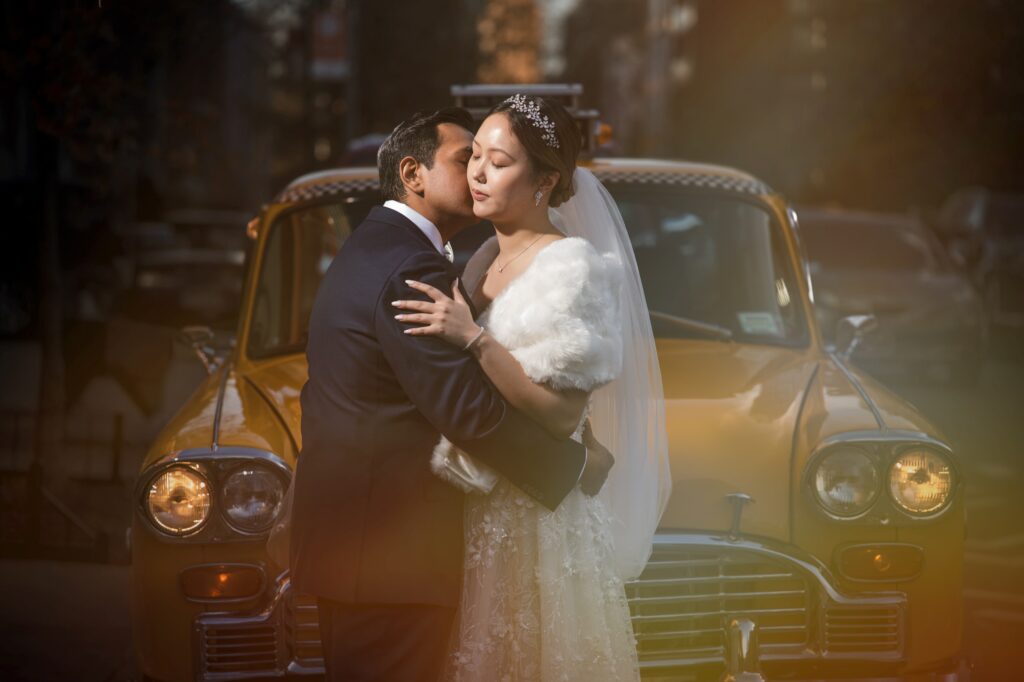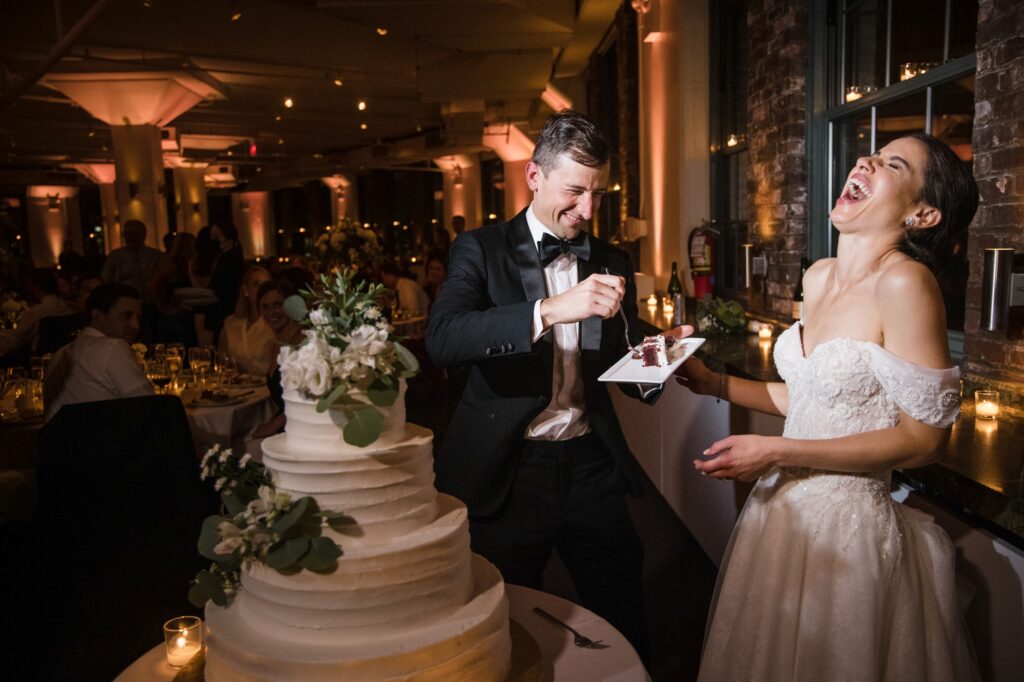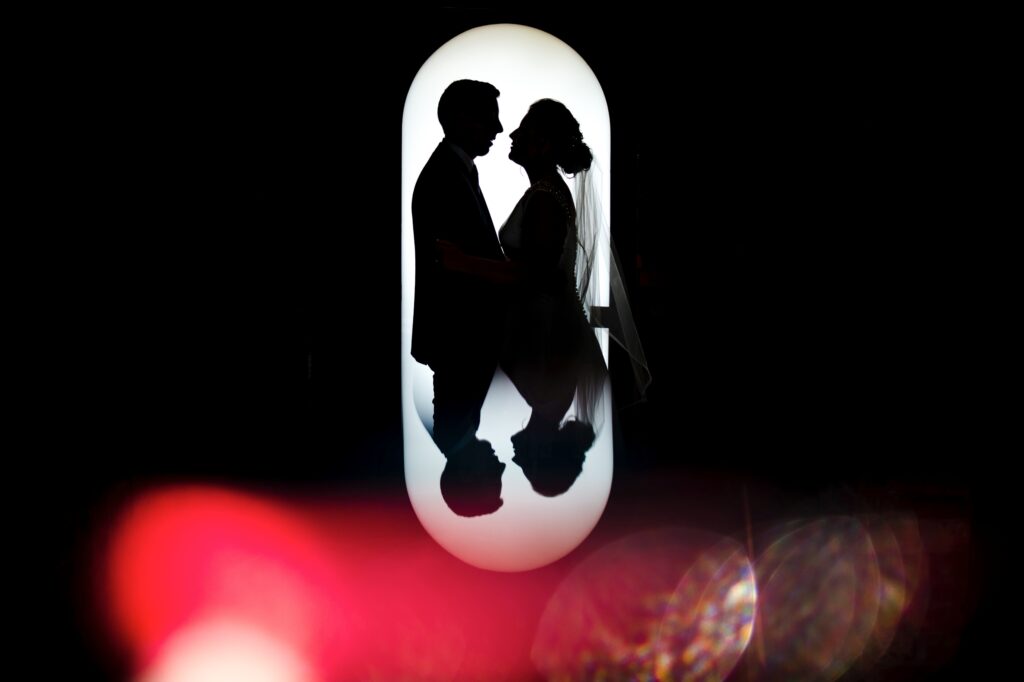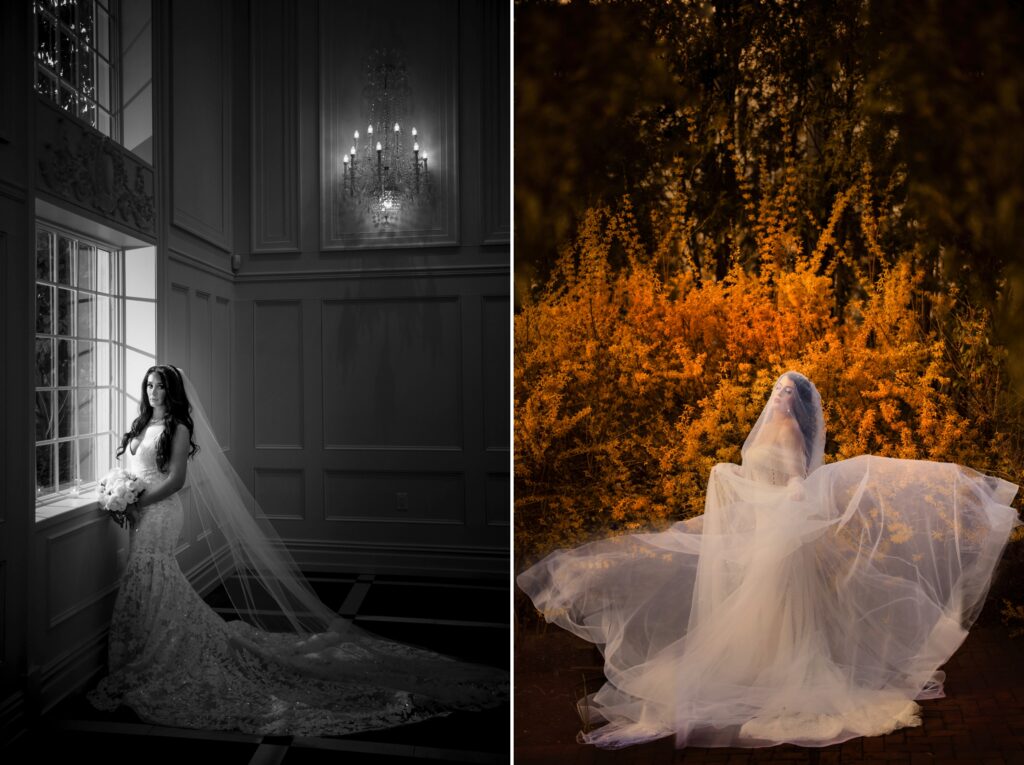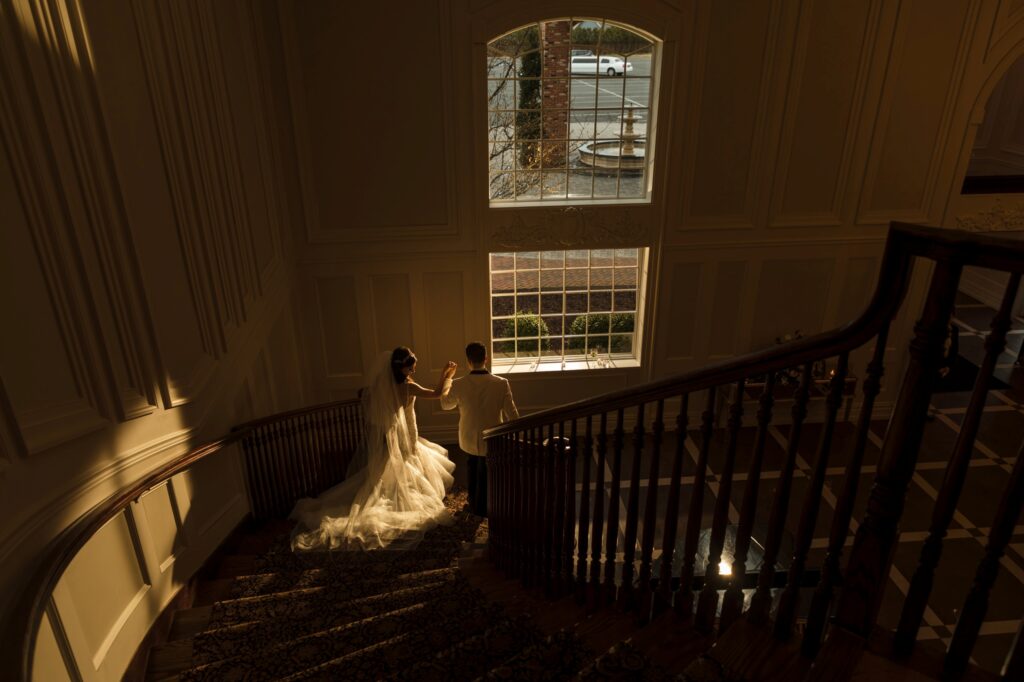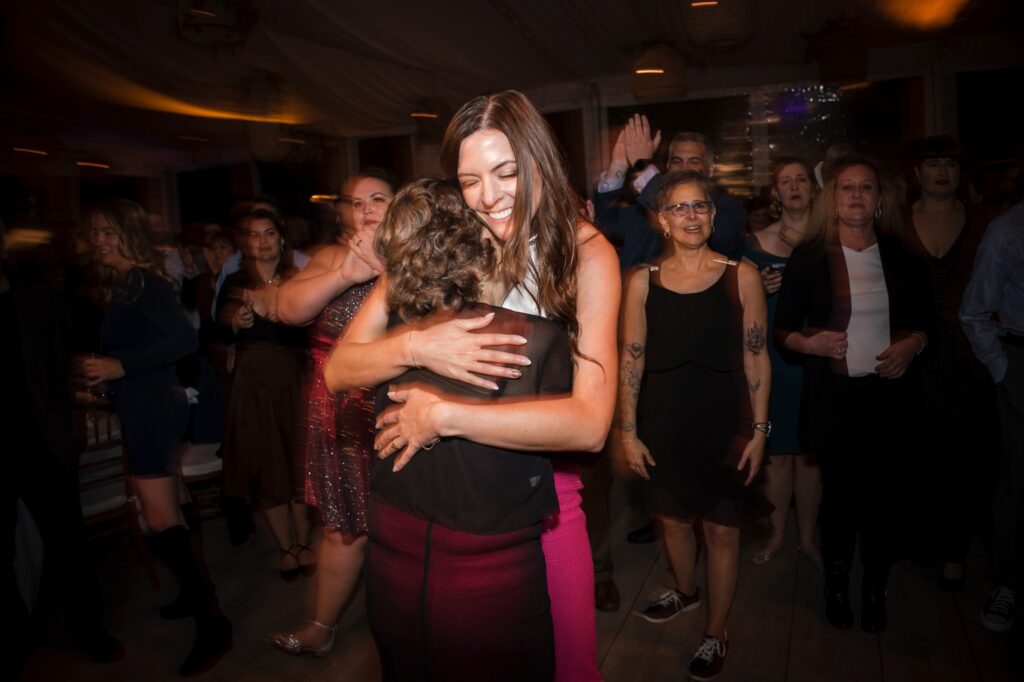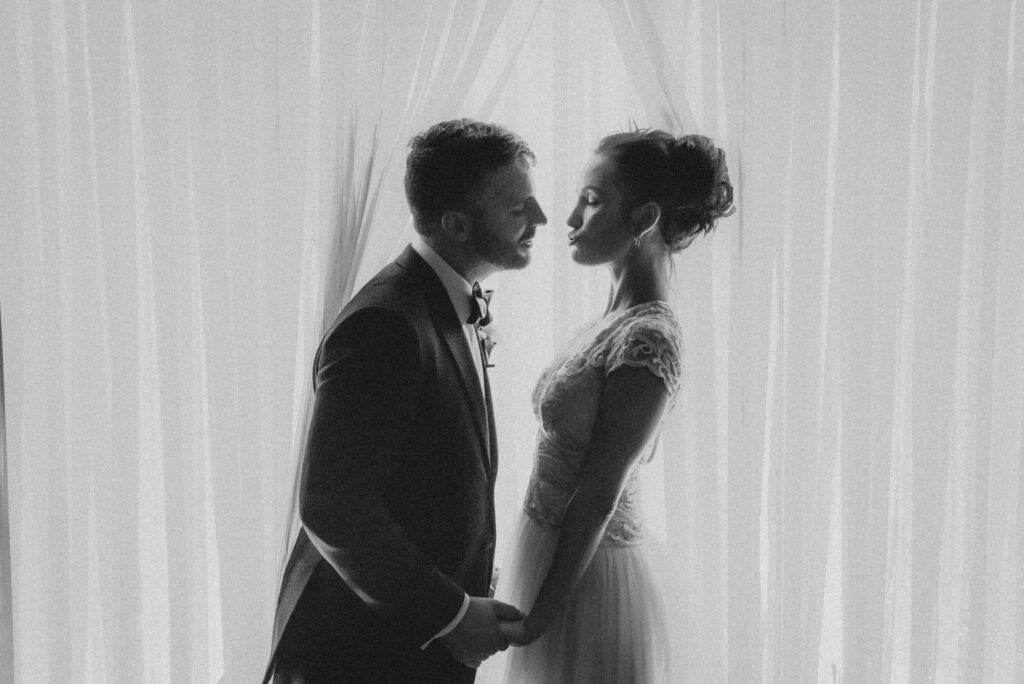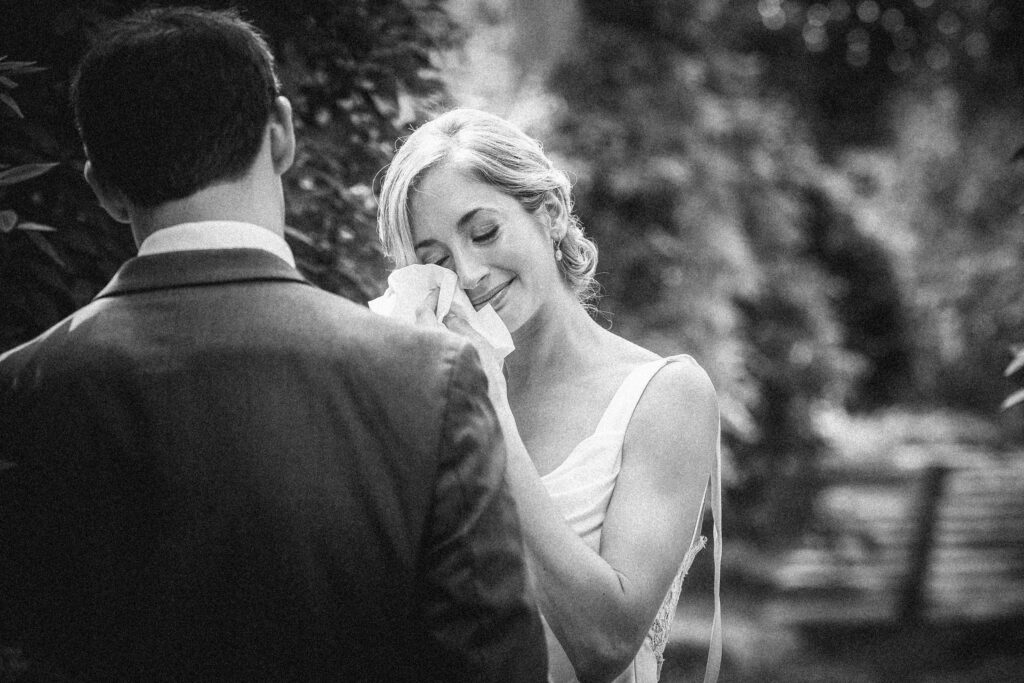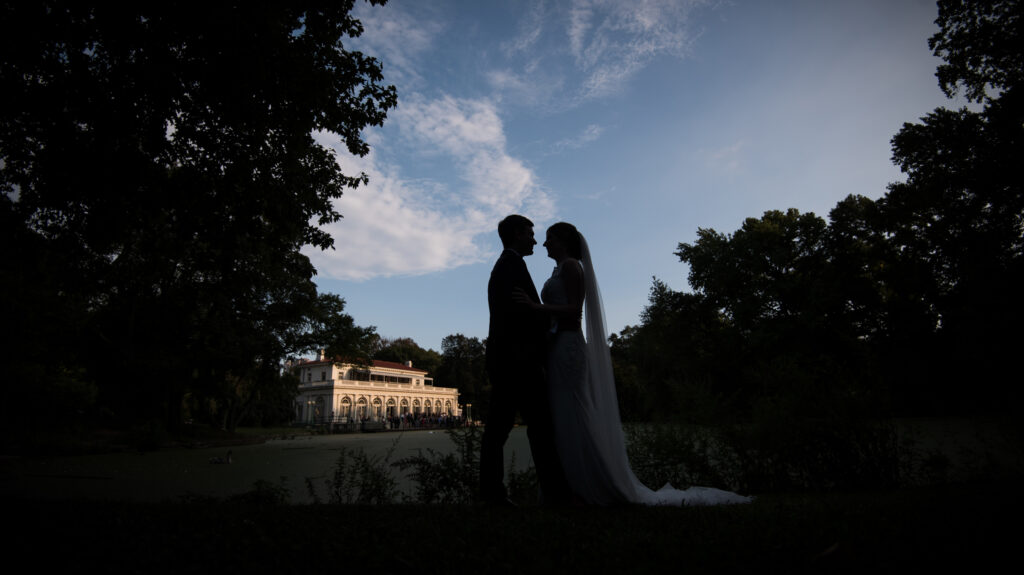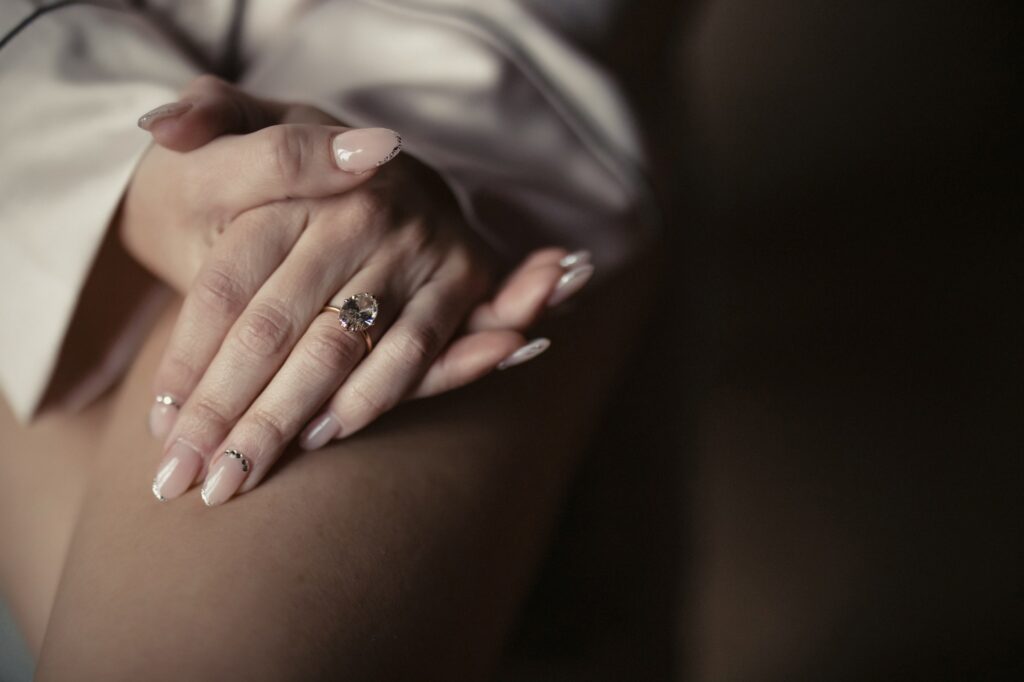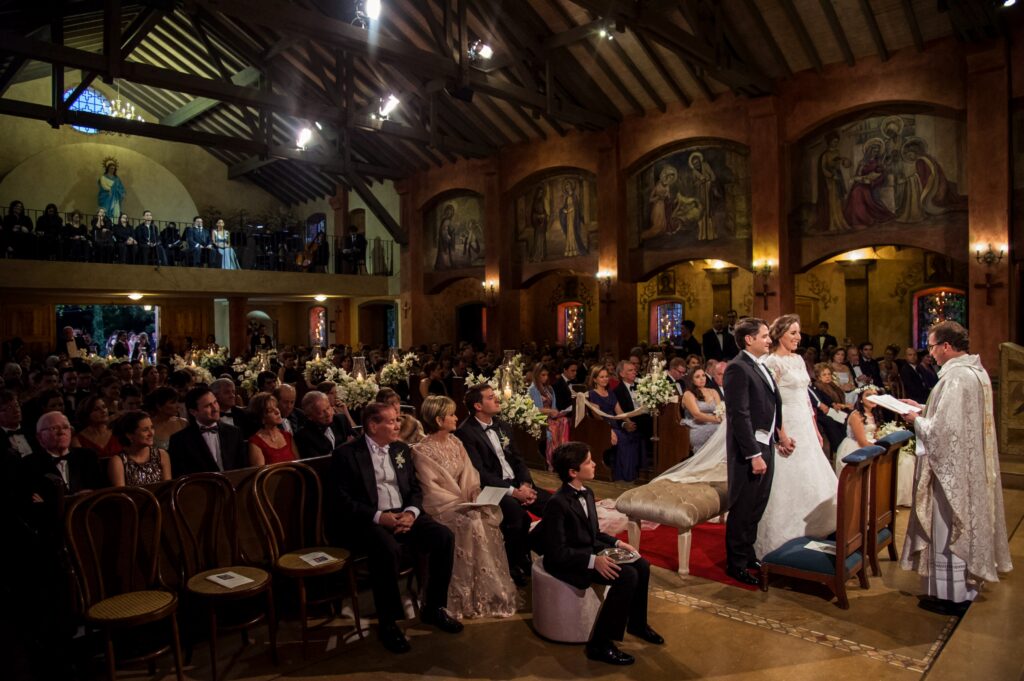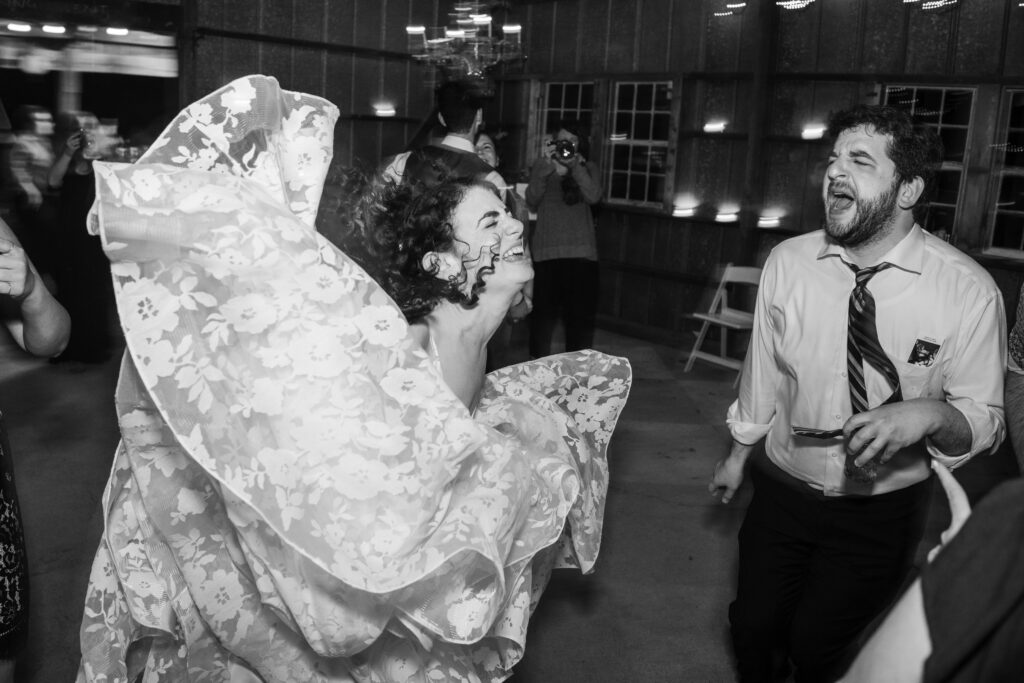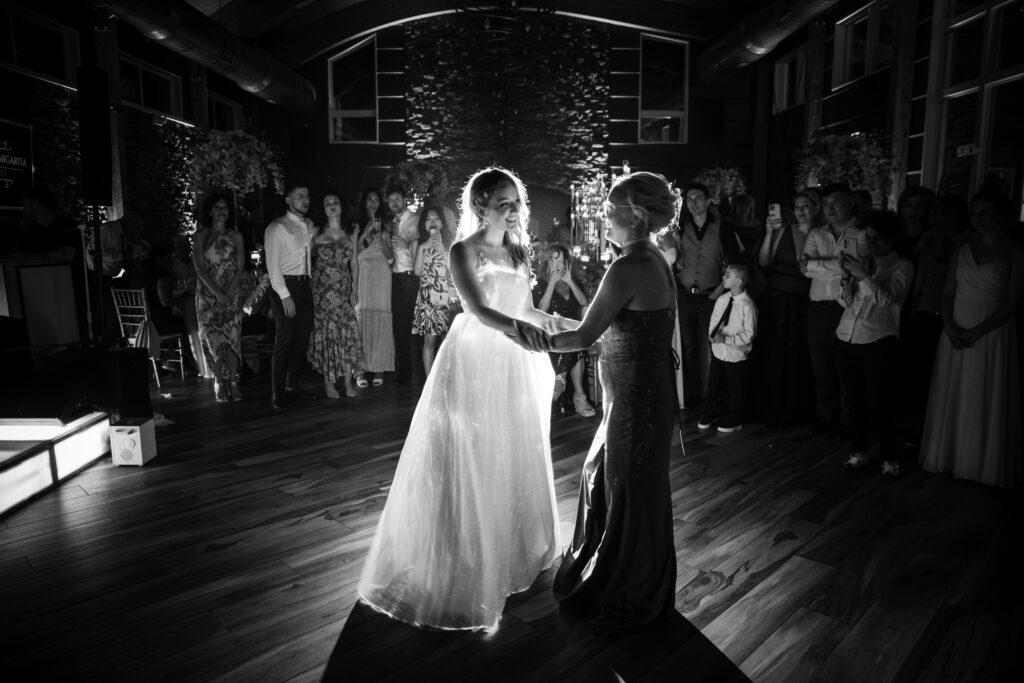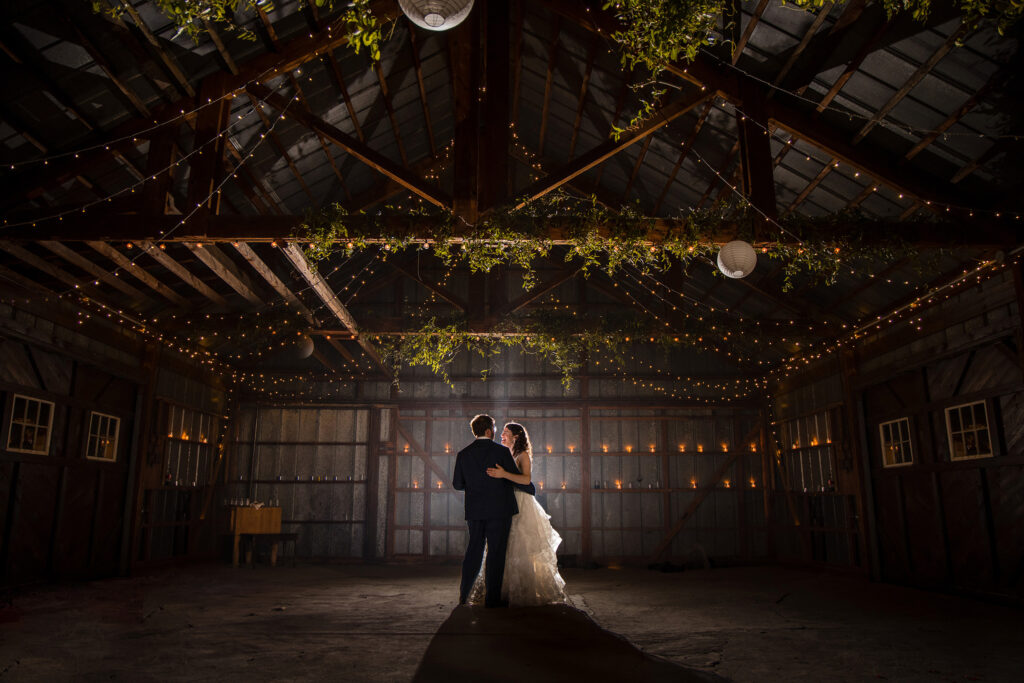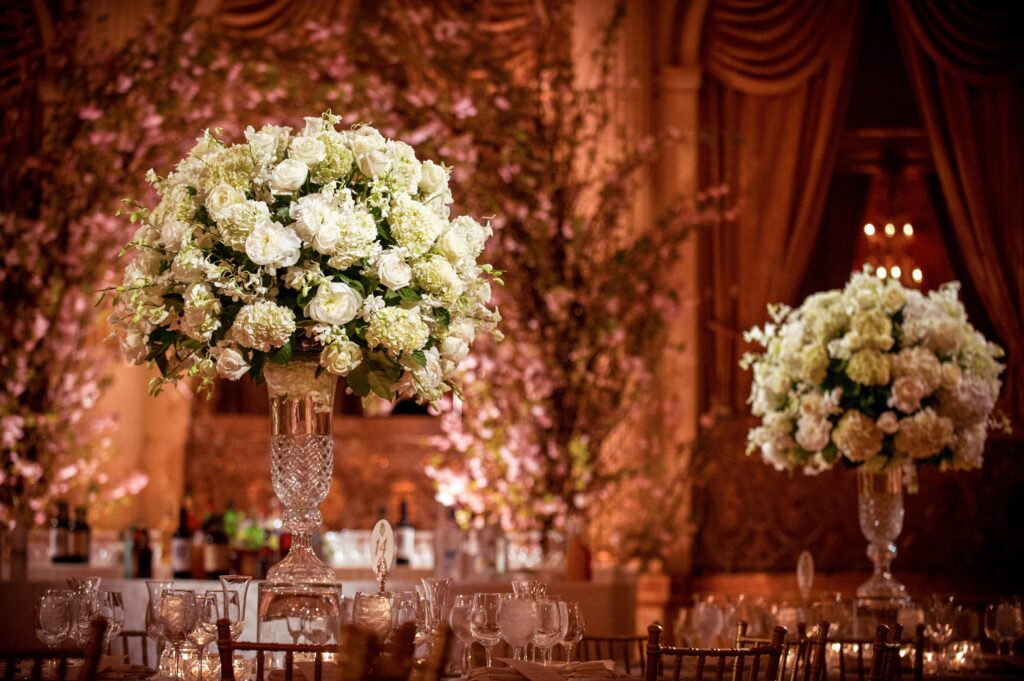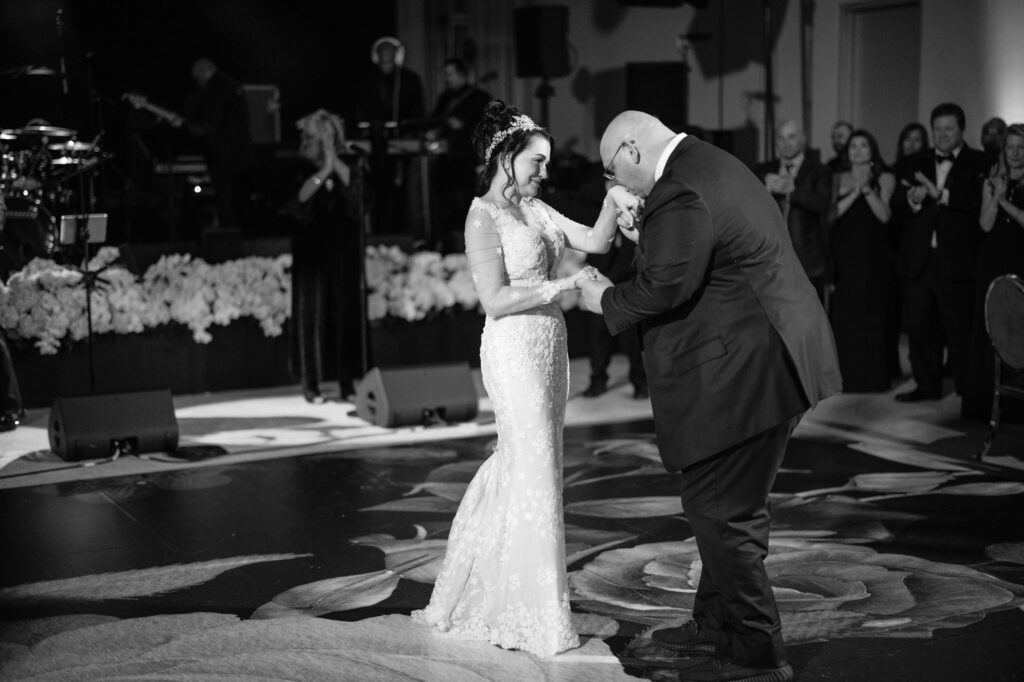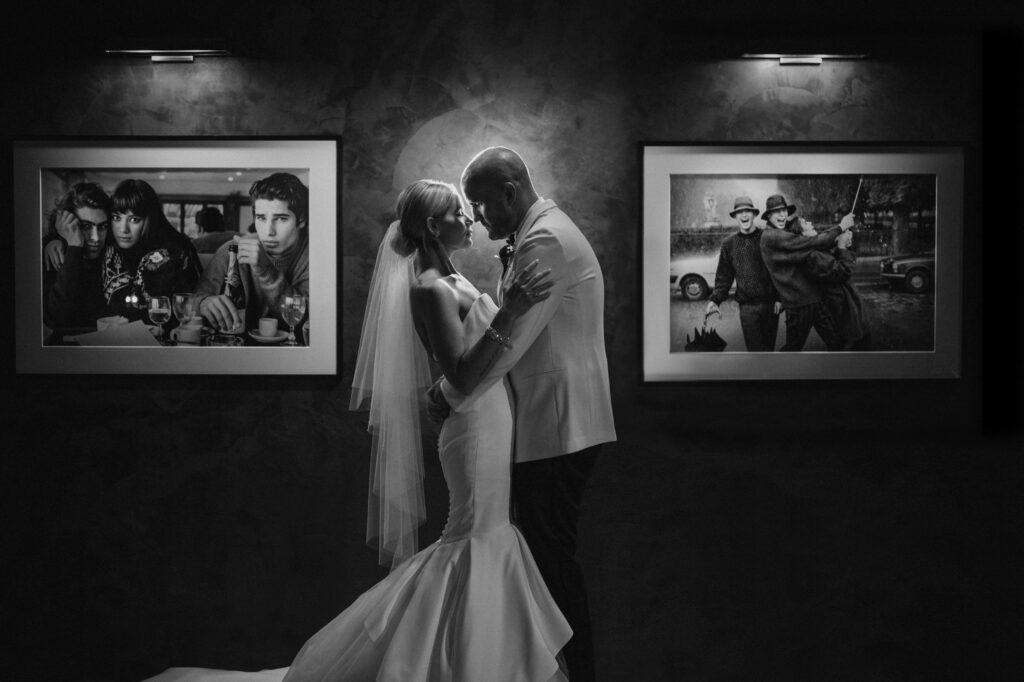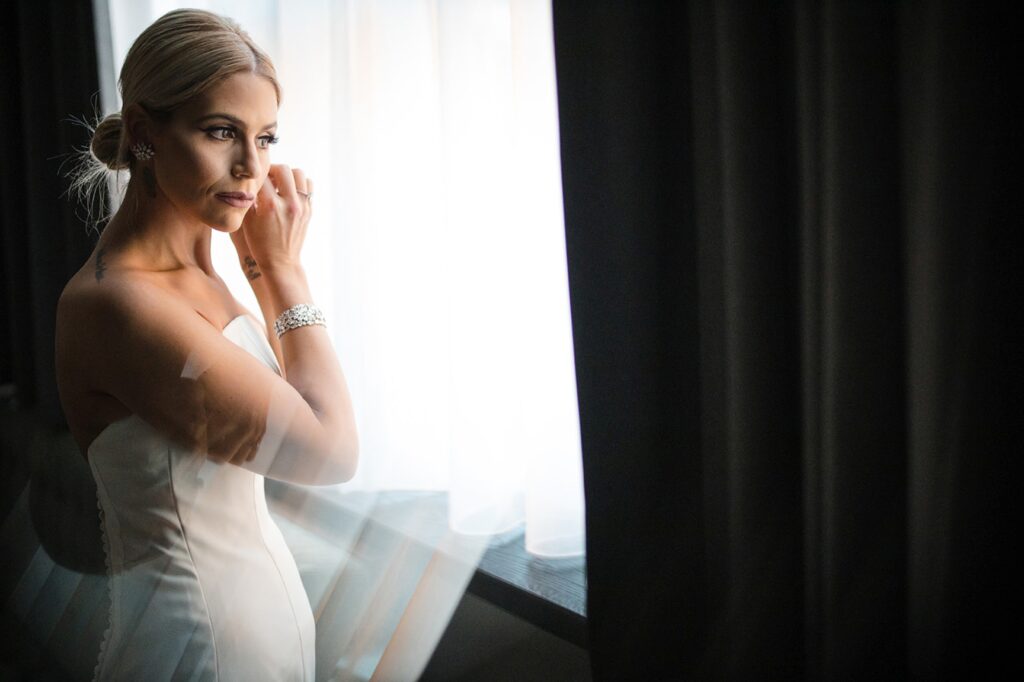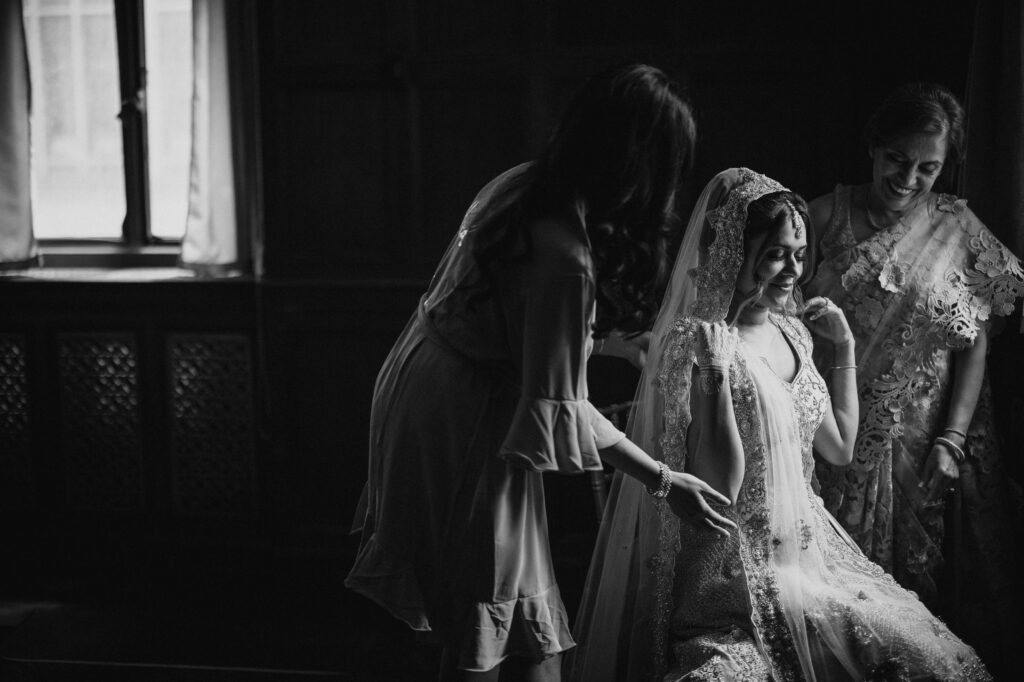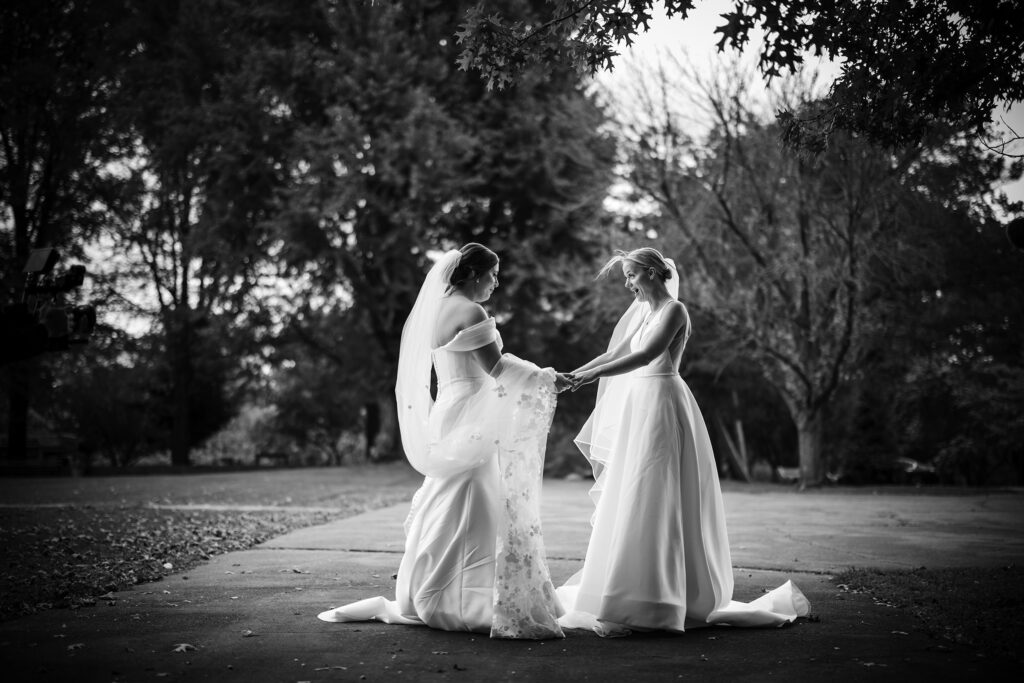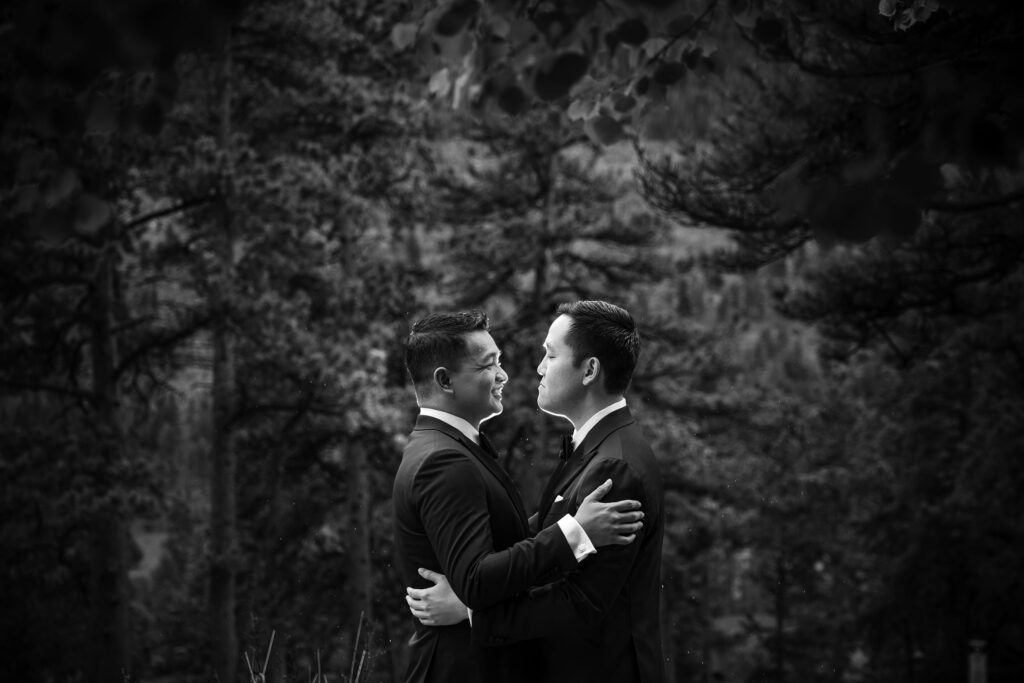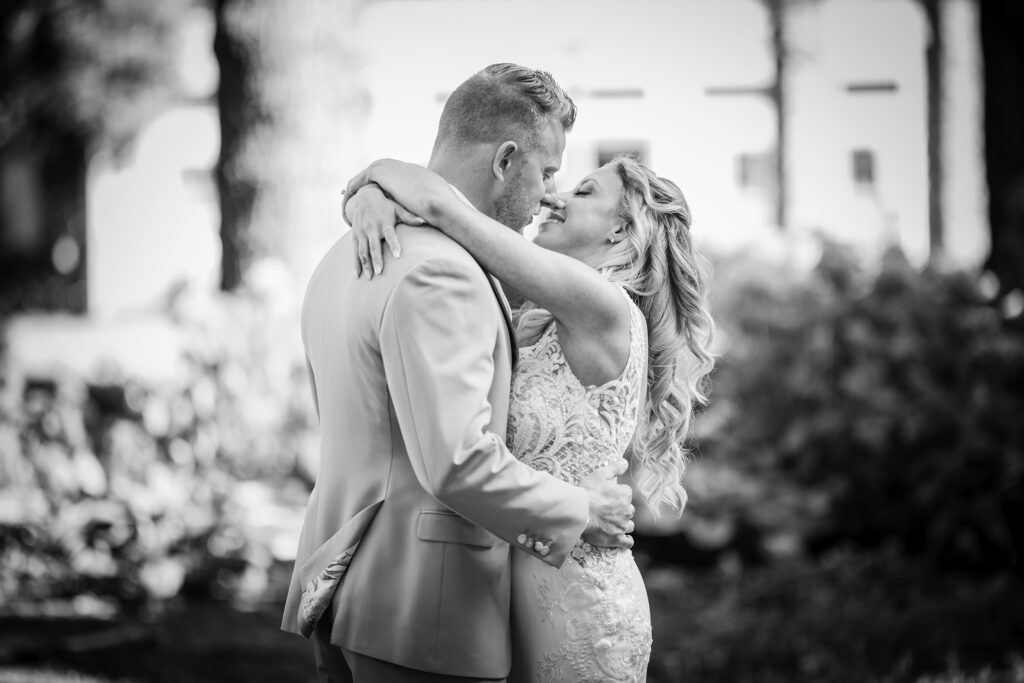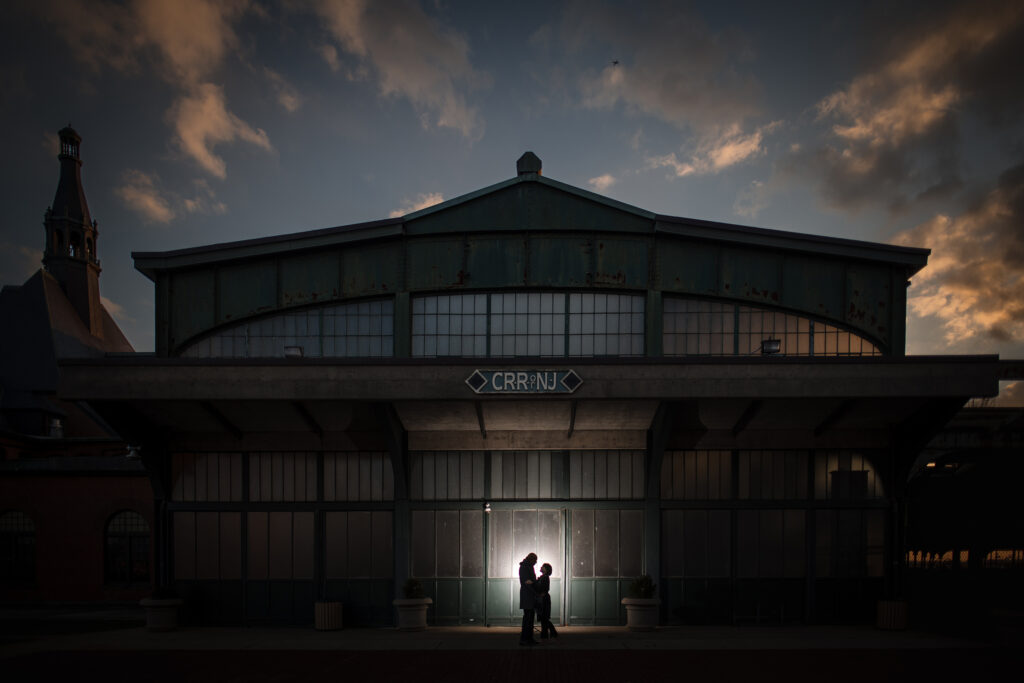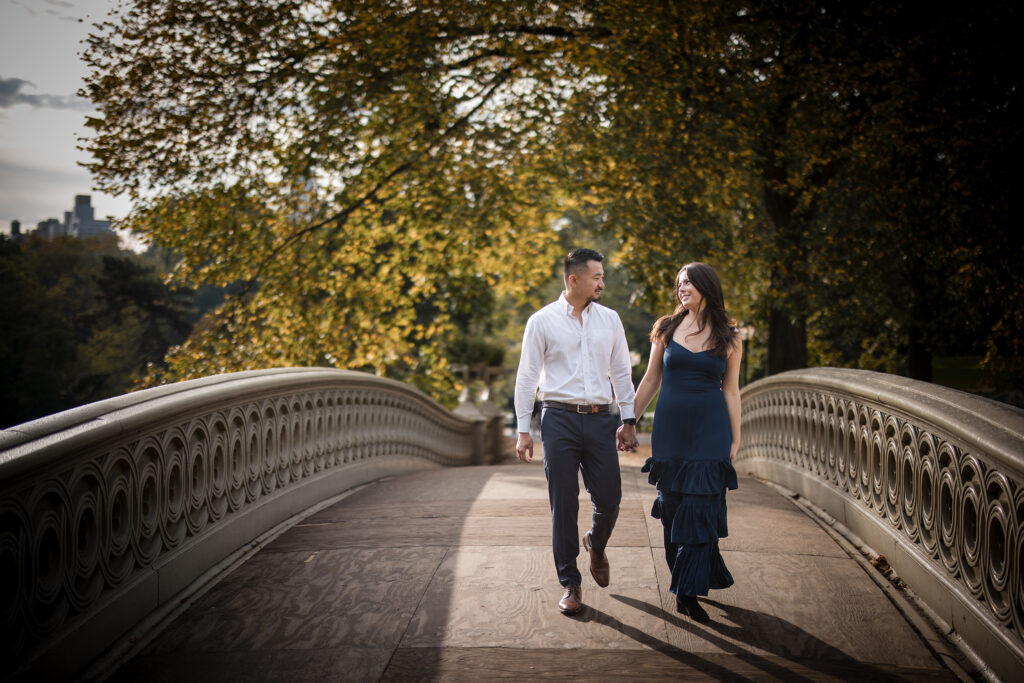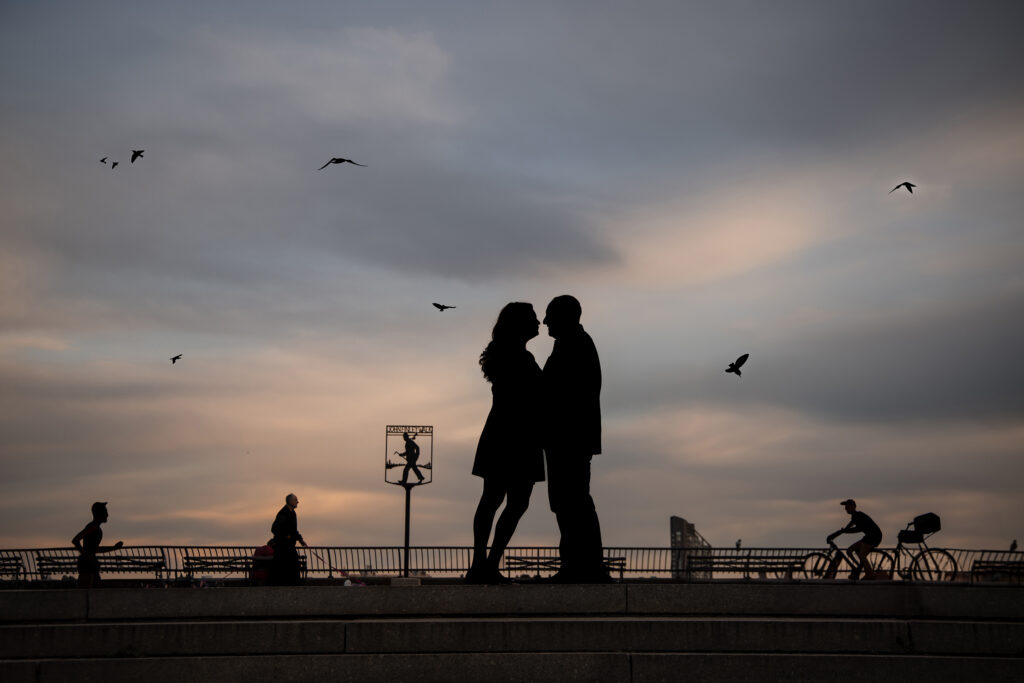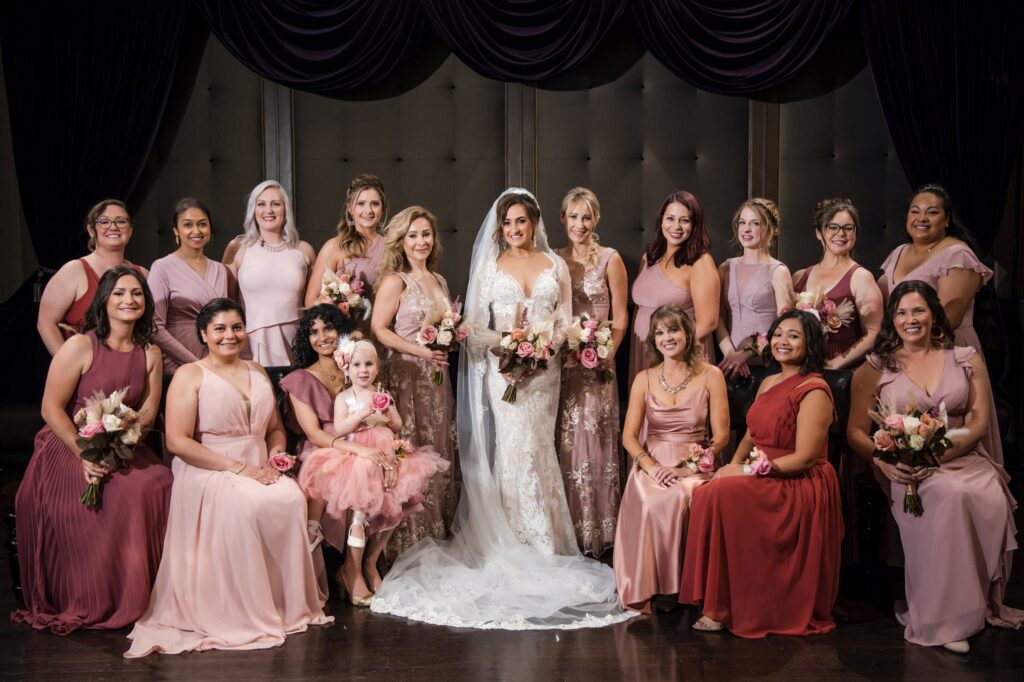A wedding is not just an event; it’s a collection of precious moments that tell a story — your story. Each photograph taken on this significant day is a treasured keepsake, a tangible memory you’ll cherish for years. This makes wedding photography not just a simple task but a crucial element in preserving the essence of your celebration. Recognizing the pivotal role of these photographs, it’s essential to prepare and plan meticulously to ensure each picture captures the emotion and beauty of your special occasion. In this comprehensive guide, we delve into 10 tips for the best wedding photos, offering valuable insights to help you achieve a stunning visual narrative of your wedding.
Every wedding unfolds a unique story from the first detail to the final dance. These photographs become the window through which your future selves will peek into one of the most significant days of your life. Hence, the importance of wedding photography cannot be overstated. It’s not just about capturing faces and events; it’s about encapsulating feelings, ambiance, and the love that permeates the air.
Navigating through the many choices and decisions to make your wedding photography resonate with your personal style can be daunting. Whether you’re dreaming of a lavish celebration or an intimate gathering, the essence lies in the details — the quiet glances, the spontaneous laughter, the tears of joy, and the elegant touches that define your day. To assist you in this journey, our 10 Tips for the Best Wedding Photos are curated to address every aspect of wedding photography, ensuring that your photos are as enchanting and unique as your celebration itself.
In this post, we’ll explore how to select the perfect photographer who aligns with your vision, the importance of communication, and how to create a seamless photography timeline. We’ll discuss how the subtleties of lighting can enhance your photos, why embracing spontaneity can lead to the most heartfelt images and the significance of being present and fully immersed in your wedding experience. We aim to equip you with practical, insightful tips that transcend the ordinary, helping you create a wedding album that’s not just a collection of photos but a masterpiece of memories.
By the end of this guide, you’ll have a deeper understanding and a well-equipped toolkit to ensure that your wedding photos are not just images but treasures that encapsulate the joy, love, and spirit of your celebration.
Tip 1: Choose the Right Photographer
The journey to capturing stunning wedding photos begins with a choice that can profoundly influence how your special day is remembered – selecting the right photographer. This decision is more than just choosing a service provider; it’s about finding a storytelling partner to document your day’s emotions, details, and unforgettable moments. Your wedding photographer is not just a person behind the lens but an artist who interprets and captures the essence of your celebration.
When embarking on this critical selection, the first aspect to consider is the photographer’s style. Every photographer has a unique approach to capturing weddings, ranging from traditional and posed to candid and documentary-style, or perhaps a blend of different styles. Reflect on the type of photographs that you are naturally drawn to. Do you envision your wedding album filled with posed, classical portraits, or do you prefer a more spontaneous, candid style that captures the day’s raw emotions and unscripted moments? Your preference in this regard is key to selecting a photographer whose style aligns with your vision.
Another vital aspect to consider is the photographer’s portfolio. A portfolio is a window into the photographer’s skills, creativity, and experience. As you peruse their work, pay attention to how they capture the essence of each wedding, the emotions conveyed, and the stories told through their photos. Look for variety and depth in their portfolio, demonstrating their ability to adapt to different wedding styles and settings. Are their images able to evoke emotions? Do they have a knack for capturing the small, intimate details and the grand, dramatic moments? The answers to these questions will help you gauge their proficiency and versatility.
Experience also plays a crucial role. An experienced wedding photographer brings technical expertise and a calm, reassuring presence that can be invaluable on a day filled with nerves and excitement. They have the foresight to anticipate moments, the expertise to handle various lighting conditions, and the professionalism to coordinate with other vendors seamlessly. Inquire about their experience with weddings similar in size, style, and venue to yours. This can give you confidence that they’ll navigate your day skillfully.
Finally, and perhaps most importantly, consider how well the photographer understands and connects with your expectations. This goes beyond their ability to take beautiful photos. It’s about their willingness to listen to your vision, flexibility in accommodating your ideas, and ability to make you feel comfortable and relaxed in front of the camera.
A good rapport with your photographer can make a significant difference in the outcome of your photos. It’s important to have a pre-wedding consultation in person or virtually to discuss your vision, preferences, and any specific requests you might have. This meeting is also a great opportunity to understand their approach and personality, ensuring they are someone you’d be happy to have around on one of the most personal and significant days of your life.
In conclusion, choosing the right photographer for your wedding is a decision that holds immense importance. It’s about finding someone who has the technical skills and artistic eye and understands and shares your vision for the day. The right photographer will not just take photos; they will capture memories, tell your story, and preserve the fleeting moments of joy, love, and celebration that define your wedding day.
Tip 2: Simplify Your Photo List
When it comes to wedding photography, striking the right balance between pre-planned shots and spontaneous, candid moments is key to creating a diverse and meaningful collection of images. While having a list of must-have family group photos is crucial, entrusting your photographer with the freedom to capture the rest is equally important. This approach ensures that all the significant family and group shots are covered and allows the photographer to use their expertise and creativity to seize those fleeting, unscripted moments that often become the most cherished memories.
The essence of this approach lies in trusting your professional photographer’s eye and experience. A skilled wedding photographer brings more than technical prowess; they bring an intuitive sense for capturing the essence of your wedding day. They are adept at identifying and seizing the key moments that define your celebration — from the nervous excitement of getting ready and the emotional depth of the ceremony to the joy and revelry of the reception. Their expertise allows them to be in the right place at the right time, ensuring that those once-in-a-lifetime moments are captured beautifully.
Creating a list of must-have family group photos is essential to your wedding photography planning. This list serves as a guide to ensure that no crucial family combinations are missed amidst the day’s hustle and bustle. It’s a practical tool that helps organize the day and ensures that everyone who needs to be in these important photographs is available and prepared. This is especially important for large weddings or families with complex dynamics. However, the key is to keep this list concise and well-organized, allowing enough time and flexibility for your photographer to capture candid and spontaneous shots that occur throughout the day.
The true beauty of wedding photography often lies in the unscripted moments. These instances can’t be planned or anticipated — a tearful embrace, a burst of laughter, an impromptu dance move, or a loving glance. Such moments are fleeting and require a photographer who is always observant and ready to capture them. By trusting your photographer to focus on these spontaneous shots, you allow the story of your day to unfold naturally. This trust grants the photographer the creative freedom to explore and capture the unique atmosphere and emotional depth of your wedding.
Moreover, allowing your photographer the freedom to capture the day as it naturally unfolds can lead to more relaxed and authentic photos. When you and your guests are not constantly worried about posing or adhering to a strict photography “shot list”, it creates an environment where everyone can be present in the moment. This authenticity translates into photographs that are not only visually stunning but also emotionally resonant.
So, while a structured list of family and group photos is important, giving your photographer the liberty to capture candid moments is what truly brings your wedding album to life. It’s about finding the right balance — ensuring that the key family photos are taken care of while embracing the unexpected and spontaneous moments that make your wedding uniquely yours. Trust in your photographer’s vision and experience, and you’ll be rewarded with a collection of images that beautifully encapsulate the essence of your wedding day.
Tip 3: Consider Lighting
The influence of lighting on wedding photography cannot be overstated. It is the unseen artist capable of transforming ordinary scenes into extraordinary memories. Understanding and harnessing the power of lighting is essential in creating the desired ambiance and mood in your wedding photos. Whether basking in the natural light of the outdoors or illuminating the grandeur of an indoor venue, the way light interacts with the subjects and surroundings can dramatically change the outcome of each photograph.
The Golden Hour: Capturing the Magic of Natural Light
For outdoor photo sessions, timing is everything. The most coveted time for photographers is the ‘golden hour’ – that magical window shortly after sunrise or just before sunset. During this time, the sun’s position creates a soft, warm, and diffused light that flatters the subjects, adding a romantic, ethereal quality to the photographs. The golden hour’s light envelops the landscape in a gentle glow, creating long, soft shadows and a golden hue that enhances the natural beauty of the setting. This time of day is ideal for capturing intimate moments, delicate details, and the natural romance of your special day.
When planning your wedding schedule, consider setting aside time during the golden hour for some of your key photo sessions. This might include couple portraits, wedding party shots, or any moment where this enchanting light’s natural ambiance can enhance the day’s emotion and beauty. However, it’s important to note that the golden hour is fleeting, and timing is crucial. Discuss with your photographer how to best integrate this into your day’s timeline, ensuring you make the most of this unparalleled natural lighting.
Navigating Indoor Lighting Challenges
Indoor venues, while offering their unique charm and elegance, can present different challenges for wedding photography, primarily due to lighting. Unlike the predictable nature of outdoor light, indoor lighting can vary significantly from venue to venue. It can range from candlelight’s soft glow to a modern space’s harsh fluorescents. Each type of lighting can create a different mood and feel in the photographs.
It’s crucial to discuss lighting options with your photographer, especially for indoor venues. A seasoned photographer will know how to manipulate and work with the available light, whether it’s enhancing natural light from windows or adding artificial light sources. They can employ various techniques such as bouncing light, using reflectors or incorporating additional lighting equipment to ensure the photos are beautifully lit, regardless of the indoor conditions.
Moreover, your photographer can help you understand how the venue’s lighting will interact with other elements, like the color of the walls, the size of the space, and the decor. This understanding can significantly affect your venue selection or decoration choices. For instance, a venue with large windows and light-colored walls will reflect natural light beautifully, creating a bright and airy feel in the photographs. On the other hand, a darker venue might require additional lighting but can offer a more intimate and dramatic atmosphere.
Tip 4: Scout Your Locations
The choice of photo locations for your wedding is a key element that adds depth, variety, and character to your wedding album. Thoughtfully pre-selecting a mix of locations ensures efficiency on the day and provides a canvas for capturing the diverse moods and moments of your celebration. Whether it’s the lush garden backdrop, the elegant ambiance of a ballroom, or the rustic charm of a barn, each setting plays a vital role in narrating your love story through photographs. However, alongside careful planning, it’s equally important to maintain flexibility and trust your photographer to make spontaneous, day-of decisions about photo spots.
Planning Your Photo Locations
When choosing locations, consider spots that resonate with your personal style and the overall theme of your wedding. These locations should be visually appealing and meaningful to you as a couple. For instance, you might choose a serene park where you had your first date for more intimate shots or the grandeur of a historic building for dramatic effect. Each location offers unique opportunities for different types of photos – from wide, scenic shots that capture the grandeur of the setting to close, intimate ones that focus on your interactions and emotions.
Also, consider the logistical aspects, such as the distance between these locations and your ceremony or reception venue. You’ll need to factor in travel time to ensure you’re not rushing through your photo sessions. It’s about striking the right balance – selecting locations with variety and significance without causing undue stress or time constraints on your wedding day.
Embracing Flexibility and Photographer’s Expertise
While pre-selected locations provide a structured plan, it’s crucial to remain flexible and open to your photographer’s suggestions on the day. Experienced photographers have an eye for spotting unique opportunities and backdrops you might not have considered. Changes in weather or lighting conditions or even discovering a hidden gem on the venue’s grounds can lead to stunning photographs that couldn’t have been planned in advance.
Trusting your photographer’s judgment and expertise allows for spontaneity and creativity. They might find a beautiful spot with perfect lighting or an interesting architectural element that adds a unique touch to your photos. This flexibility can be especially important if unexpected circumstances arise – such as a sudden rain shower or a crowded location. A skilled photographer can quickly adapt, finding alternative spots or using the change in weather to capture dramatic and romantic images.
A Collaborative Approach for the Best Results
Collaboration between you and your photographer is key. Before the wedding, discuss your preferred locations and share any specific ideas or themes you have in mind. However, on the day, allow your photographer the freedom to explore and suggest alternative spots. Their professional perspective and understanding of light, composition, and background can unveil possibilities that enhance the beauty and emotion of your wedding photographs.
Tip 5: Embrace the Unexpected
Your wedding day is a tapestry of meticulously planned yet beautifully unpredictable moments. Every couple dreams of a perfect wedding, but the truth is, perfection often lies in the unplanned and unforeseen. Whether it’s rain or shine, the unexpected elements can add a unique flavor to your wedding photography, creating memorable and distinctive images that stand out in your album.
Weathering the Unexpected with Style
One of the most common unforeseen factors in any outdoor wedding is the weather. A sudden shower or an overcast sky can initially seem like a setback. However, these weather changes can create some of the most striking and emotive photography. Raindrops can add a romantic, cinematic quality to your photos, turning ordinary scenes into moody, atmospheric masterpieces. Imagine capturing a tender kiss under an umbrella or the wedding party laughing as they dash from raindrops – these moments bring your wedding album to life with authenticity and joy.
Similarly, a gust of wind can add movement and drama, lifting veils and creating dynamic, spontaneous images. Even an overcast sky provides soft, diffused lighting that flatters the skin tones and minimizes harsh shadows, ideal for portraits. Embracing these elements requires a bit of flexibility and a spirit of adventure, but the results are often breathtakingly beautiful.
The Joy of Spontaneous Moments
Besides the weather, countless other unplanned moments can arise during a wedding. These can range from a flower girl’s impish grin or a surprise dance by a family member to infectious laughter during speeches. These unscripted, organic moments often become the most cherished memories of your day.
With their trained eye and reflexes, a professional wedding photographer is always on the lookout for these candid, fleeting instances. They capture the essence of your wedding – the laughter, tears, and surprises – that scripted moments can’t always convey. These spontaneous shots are the ones that couples often treasure the most, as they reflect the genuine emotions and unguarded moments of the day.
Turning ‘Flaws’ into Features
Sometimes, what might seem like a flaw or a mishap can become a unique feature of your wedding story. A torn dress hem might lead to a heartwarming moment of the wedding party coming together in a fix, a forgotten vow can turn into a moment of tender laughter, or a photo bombed by a playful child can add a touch of whimsy and joy. It’s about seeing the beauty in imperfection and recognizing that these moments add character and personality to your wedding narrative.
In embracing the unexpected, you allow your wedding day to unfold in its own beautiful, unique way. It’s about enjoying the journey, not just the destination. Accepting and anticipating these unplanned events creates space for authenticity and warmth in your wedding photos.
Tip 6: Hire a Wedding Planner
The decision to hire a wedding planner can be pivotal in the journey of orchestrating your wedding. Wedding planners are much more than just organizers or coordinators; they are the architects of your day, ensuring that each detail is meticulously planned and executed with precision. Their expertise and guidance can be the key to transforming your wedding vision into a seamless reality, allowing you to immerse yourself fully in the day’s joy and celebration.
Meticulous Coordination of Details
A wedding is complex, laden with numerous details that must harmonize perfectly. The list is exhaustive, from vendor liaisons and venue decorations to timing the procession. A wedding planner brings a systematic approach to managing these details. They work tirelessly behind the scenes, ensuring everything from the grandest element to the minutest detail aligns with your vision. Their expertise in handling logistics, from seating arrangements to coordinating with caterers, florists, and musicians, alleviates the burden from your shoulders. With a wedding planner at the helm, you can rest assured that every aspect will come together flawlessly.
Mastering the Art of Timing
One of the most critical aspects of a wedding day is timing. The flow of events from the ceremony to the reception must be smooth and unhindered. Wedding planners are adept at creating and managing schedules, ensuring each segment of your day transitions seamlessly into the next. They synchronize with all parties involved, keeping everyone on track with the day’s timeline. This orchestration is vital in preventing delays and ensuring that events such as speeches, toasts, and dances occur at the intended times, making the day enjoyable and stress-free for you and your guests.
A Pillar of Support and Guidance
Beyond the logistical aspects, wedding planners also act as advisors and confidantes. They provide guidance on etiquette, tradition, and modern trends, helping you make informed decisions. With their wealth of experience, they can offer insights and suggestions that you may not have considered. Whether it’s advice on color schemes, invitation designs, or menu selections, a wedding planner’s expertise can elevate the overall aesthetics and experience of your wedding.
Enabling Your Presence in the Moment
Perhaps the most significant benefit of having a wedding planner is the freedom it grants you to be truly present on your wedding day. Knowing that a professional is managing the details and handling any unforeseen issues allows you to relax and immerse yourself in the celebration. You can focus on the profound moments – walking down the aisle, exchanging vows, and celebrating with loved ones – without the distraction of logistical concerns. This peace of mind is invaluable, enabling you to experience your wedding day to its fullest, creating memories you’ll cherish for a lifetime.
Tip 7: Plan Enough Time for Photography
One of the essential aspects of planning your wedding is creating a timeline that reflects the significance of every moment, especially when it comes to photography. The allocation of time for photography is not just a logistical detail; it’s an investment in preserving the memories of your special day. Thoughtful planning in this area ensures that each precious moment is captured without feeling rushed, allowing you to relax and truly engage in each experience.
Building a Photography-Friendly Schedule
When planning your wedding timeline, it’s crucial to work closely with your photographer to determine how much time is needed for various types of photos. This might include pre-ceremony preparations, the ceremony itself, formal family portraits, couple portraits, and candid shots during the reception. A common oversight in wedding planning is underestimating the time needed for these sessions. Your photographer can provide valuable insights based on their experience, helping you to allocate adequate time for each segment.
Considering the Flow of the Day
The flow of your wedding day should be a smooth transition from one event to the next, with photography sessions seamlessly integrated. For instance, allotting time for couple portraits during the golden hour requires considering the sunset timing on your wedding day. Similarly, if you plan to have a ‘first look’ before the ceremony, you’ll need to schedule this to allow enough time for the moment itself and the emotions and reactions that follow.
Factoring in Travel and Buffer Time
Accounting for travel time is crucial if your wedding involves multiple locations, such as a separate venue for the ceremony and reception. Underestimating travel time can lead to a rushed photography session or even missing out on key photo opportunities. Additionally, it’s wise to include buffer time in your schedule. This extra time can accommodate unforeseen delays like traffic or last-minute touch-ups or give you a moment to breathe and take the day.
The Importance of Not Rushing Key Moments
Allocating enough time for photography ensures that key moments are not rushed. For example, family portraits are integral to the day, and rushing through them can lead to missed combinations or forced expressions. Similarly, couple portraits are an opportunity to capture the intimacy and love of your relationship; a rushed session may not fully capture the depth of these emotions.
Collaborating with Your Photographer
Effective communication with your photographer before the wedding is key. Discuss your expectations, specific shots you desire, and the overall flow of the day. This collaboration ensures that your photographer is prepared and can plan their approach to capture the day’s events as they unfold. They can also offer suggestions for optimizing the photography schedule based on lighting, venue specifics, and your personal preferences.
Tip 8: Prioritize Candid Shots
Candid photography plays a pivotal role in the storytelling of your wedding day. Unlike posed shots, which capture the aesthetic and formality of the occasion, candid shots delve into the heart and soul of your celebration, seizing the raw, unfiltered emotions and spontaneous moments that define the day. These unposed photographs offer a genuine narrative of your wedding, filled with natural expressions, fleeting glances, and heartfelt interactions.
The Art of Capturing Authenticity
Candid photography is about capturing people in their natural state without the awareness of the camera. It’s about seizing moments of laughter, tears, surprise, and affection that occur organically throughout the day. These shots often include the couple sharing a secret smile, a tearful relative during the vows, children playing, or guests lost in the moment on the dance floor. These unscripted, genuine moments contribute an authenticity to your wedding album that posed shots may not always convey.
Encouraging Focus on Spontaneous Joy
While traditional posed photographs have their place in memorializing the day, encouraging your photographer to focus on candid moments allows for a more comprehensive and heartfelt depiction of your celebration. Candid photography can capture the day’s atmosphere, the personalities of your guests, and the special nuances that make your wedding uniquely yours. It’s the unguarded laughter, the tears of joy, the impromptu dance moves, and the unexpected interactions that often become the most treasured images.
Collaboration with Your Photographer
A good working relationship with your photographer is essential to capture these candid moments effectively. Discuss the importance of candid shots and your expectations for these natural captures with them. Experienced photographers are skilled in blending into the background, observing quietly, and anticipating moments before they happen. They are adept at being in the right place at the right time, ensuring that the spontaneity and spirit of your day are captured without intrusion.
Embracing the Unpredictable Nature of Candid Shots
The beauty of candid photography also lies in its unpredictability. Unlike posed shots, where the outcome is somewhat controlled, candid photography is spontaneous. It requires an open mind and a willingness to embrace whatever the moment brings. This unpredictability adds an element of surprise and delight when you finally see your photos and discover moments you may not have been aware of or remembered.
The Role of Candid Shots in Telling Your Story
In the tapestry of your wedding album, candid shots add depth and emotion, providing a fuller, more vibrant story of your day. They complement the formal photographs by filling in the narrative gaps, offering insights into the day’s atmosphere and the emotions of you and your guests. Candid shots ensure that the laughter, the tears, and the love that enveloped your wedding day are immortalized in their truest form.
Tip 9: Live in the Moment
Your wedding day, a sequence of fleeting moments, passes with the swiftness of a heartbeat. Amidst the flurry of excitement, it’s vital to immerse yourself deeply in every second. Embracing the present elevates your experience to one of sheer joy and connection and lends an unmistakable authenticity to your photographs.
When fully engaged, every emotion you feel is subtly etched on your face, in your posture, and in how you interact with your surroundings and your loved ones. These genuine expressions are the soul of your photographs, capturing the essence of your joy, love, and celebration in a way posed images cannot. A tender glance, a spontaneous laugh, and a moment of reflection are the unscripted jewels that a skilled photographer will encapsulate, transforming them into timeless memories.
Moreover, being present allows the day’s events to unfold naturally, without the distraction of worry or anticipation. This presence of mind can transform ordinary moments into extraordinary memories. Your wedding is a tapestry of unique experiences, and your complete immersion in each part of the day ensures that your photographs will be as rich and varied as your emotions.
Thus, as you step into the magic of your wedding day, remind yourself to pause, breathe, and absorb every detail. This mindfulness not only enriches your personal experience but also allows your photographer to capture the true spirit of your celebration, resulting in a wedding album that is both deeply personal and profoundly beautiful.
Tip 10: Communicate with Your Photographer
The cornerstone of capturing your wedding day perfectly lies in the clarity of communication with your photographer. This dialogue is more than a mere exchange of ideas; it’s the foundation upon which your wedding photography is built. By openly discussing your expectations, specific desires, and any apprehensions well in advance, you ensure a harmonious collaboration that reflects your vision in every frame.
Begin by articulating your vision: What is your ideal wedding album? Are you drawn to candid, spontaneous shots that capture the moment’s essence, or do you prefer classically staged portraits? Share inspirations or examples of photography styles you admire. This discussion gives your photographer a clear understanding of your aesthetic preferences and the mood you wish to evoke in your photos.
Special requests often form an essential part of this conversation. Whether incorporating a family heirloom in your portraits, capturing a special moment with a loved one, or getting that perfect shot at a sentimental location, these details matter. Communicating these requests beforehand lets your photographer plan accordingly and ensure that these crucial shots are seamlessly integrated into the day’s photography schedule.
Addressing any concerns or apprehensions is equally important. If there are aspects of wedding photography you’re uneasy about, such as certain poses or angles, convey these to your photographer. They can provide guidance and alternatives that put you at ease. Similarly, if you’re conscious about how certain elements or people are photographed, discussing these sensitivities ensures your comfort and trust during the photography process.
Remember, effective communication is a two-way street. Encourage your photographer to share their insights and suggestions. Their expertise might open doors to creative possibilities you hadn’t considered. This exchange of ideas can lead to a more enriched and personalized photography experience.
In conclusion, by fostering open and detailed communication with your photographer, you pave the way for a collection of images that capture the beauty of your wedding day and resonate with your personal story and style. This collaborative approach is key to creating a wedding album you’ll treasure forever.
Conclusion
Embracing these 10 tips, you are not merely preparing for a day of photography but crafting a legacy. Each of these guidelines is a stepping stone toward creating a wedding album that is more than a collection of photographs. It’s a tapestry of memories woven with grand and subtle moments, each imbued with profound significance.
Your wedding album will become a cherished heirloom, a visual narrative that will be revisited repeatedly. These images will speak of love, joy, and a day where every detail was kissed by thoughtfulness and intention. They are timeless in their beauty, each frame a testament to a day marked by happiness and unity.
Consider these photographs as chapters in your story, with each image capturing a fragment of the day’s magic. From the anticipatory moments of preparation to the exuberant celebrations that follow, your album will encapsulate the full spectrum of emotions experienced on your special day. This is why investing time and thought into how your wedding is photographed is vital. The effort you put in now will pay dividends in memories that grow richer with each passing year.
In this journey, your photographer is not just a bystander but a storyteller who sees the world through a lens of creativity and sensitivity. Their role is to immortalize moments that might otherwise fade, ensuring that the feelings, the setting, and the people who played a part in your day are forever etched in time.
So, as you step forward into this beautiful chapter of your life, remember that these photographs are more than images. They are a celebration of your love story, a collection of moments that are uniquely and wonderfully yours. They are the visual echoes of a day filled with love, laughter, and the promise of a future together. By embracing these tips, you ensure that these echoes are as vibrant, heartfelt, and exquisite as the day itself.

